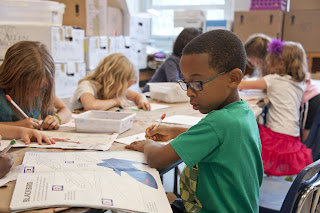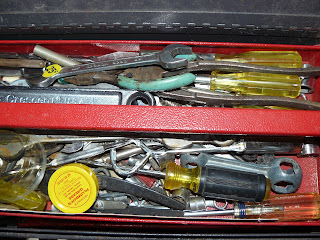We had a wonderful trip to Copenhagen, and everything went smoothly. I like to write about the places we go and the prices that things cost us so if we return, I can use this as a reference for planning our trip. I wrote the prices in the local money along with the value in US dollars but that is for the current conversion rate. It just gives us an idea of how much things cost and whether we want to go there again. We didn’t buy a Copenhagen Go card like we did last time but I’m glad we did last time. We were here for 5 days then, and it was worth the money!
Day 1: August 6, 2023, Traveling from South Carolina to CopenhagenI got up at 4am, woke Don up at 5 am, and our daughter and son-in-law picked us up at 7 am. They dropped us off at the airport, but our bags weren’t checked in until around 9 am. While we stood in line, we talked to Cathy at the United desk, and she was so nice and friendly. Our plane started boarding around 10:30 am and left the gate but a few minutes later, left the runway and returned to the gate. Apparently, one of our front compartment doors wasn’t shut completely.
Our first stop was Chicago and there was a 30-minute delay, so we shared a Chicago dog ($9). Then we finally left for Frankfort and arrived there around 6 am (local time). I was a little worried that we wouldn’t make our connecting flight, but we did. The tailwinds helped us make up for lost time.
Our flight from Chicago to Frankfort was wonderful! It was about an 8-hour flight. We were in a row with 3 seats by the window. Don had the aisle seat, and I had the middle seat, but no one ever came for the window seat. So, Don eventually took the window seat so he could lean against the wall and try to sleep. I watched 2 movies: Guardians of the Galaxy 3 and John Wick 4. We arrived in Frankfort around 6am.
We walked from one end of the airport to the other to catch our Lufthansa flight to Copenhagen. It was about an hour's flight to Copenhagen and was pretty uneventful. They did give us a bottle of water and a piece of chocolate candy.
Our First Day in CopenhagenWhen we got to Copenhagen, we found our luggage right away, stopped at the train kiosk, and bought a 3-day city pass smalls (400 dkk total for 2/ $58.83 USD). Then we took the #2 train one stop to Tarnby and walked 2 blocks to our hotel (Copenhagen Go Hotel ($288 USD including taxes on Hotels.com; we paid this online before we left home) in the rain. The room (#113) was much smaller than the last time we stayed there. The bathroom was about the size of our camper bathroom. We were able to check into our room and took an hour nap. There was no hotel safe, so we had to carry our passports and money with us when we left. It wasn’t a fancy hotel, but it was clean and comfortable. But we find this to be true of most European hotels. They offer breakfast here for an extra fee, but we usually go into town to find a local place for pastries.

We took the metro to the City Center and walked around but it was pouring rain. Then we decided to go to Fields Mall (Orestad station on the Metro) and have lunch. We found a place we ate last time and had lunch there again. The lunch buffet at Cyrus Buffet was 78 dkk per person plus 22 dkk for water (200 dkk/$26.47 USD). Then we found the supermarket (Bilka One Stop) but didn’t go in. We took the train to Norreport station and walked around. There was a market area with a lot of food vendors inside that we like to go to. Our favorite breakfast bakery, Laura’s Bakery, was no longer there but we did get a gelato (42 dkk/$6.18).
Then we took the train that we thought was to Tarnby but we ended up in Tasstrup and got off the train. We took the next train back to the City Center where we found the metro to Tarnby. A man told us that any train going to Sweden was the train that goes to Tarnby. By then we were exhausted and in bed by 8:30pm.
Day 2: August 7, 2023 - CopenhagenToday we took a test run to the port. We took the train to the City Center (Kobenhaven H). Then we walked through the long tunnel to the Blue M4 train and took it to Orientkaj. When we got to the street, there was a sign directing us to the #25 bus stop for the cruise port. We got to Ocean Quay less than 10 minutes later, but we don’t know which terminal it will be in (there are 3).
Then we went back to City Central but after looking around, we decided it was time for lunch. We took a train back to the Orestad station where the Fields Mall is. We ate lunch again at Cyrus Buffet and had the buffet with water (180 dkk) but we had a refill on the water and it cost another 22 dkk (200 dkk/$29.71 USD)
After lunch, we went to find the Hard Rock Café and took the train to Korgens Nytorv and switched to an M4 train to Radhuspladsen station. When we walked out to the street, the Hard Rock Café was right in front of us.
After buying a magnet ($110 dkk/$16.18) , we went back to Korgens Nytorv to walk around the area. As we were walking, I saw a person that I recognized and thought I was hallucinating until she called me by name! She was Linda Gessling and I know her from my Zombie Knitpocalypse knitting retreat that I went to in June. She is with the Knitting Cruise group and will be on the same ship as we are. She told me about a Yarn shop and her husband, Steve, showed me on a map where it was. When we got there, I realized it was right across from the Market where Laura’s Bakery used to be (Norreport Metro Station).
Then we decided to go revisit Christiania (a hippie kind of area) so we went to the Christianshavn station and walked there. It has really grown in 4 years! Last time we were here, they were having the Global Marijuana March but this time, it was nice and much more sedate. We went back to Korgens Nytorv and walked around some more. By then, we decided we were tired and done for the day.
We took a train back to the Orestad station to Fields Mall. Then we went to the Bilka supermarket and bought a drink, chips, an apple, a banana, and a Smorresbord (4 pieces for 130 dkk/$19.14 USD). We should have only gotten 2 pieces instead of 4 because they were very filling and we couldn't finish them all! Our total bill was 159 dkk/$23.38 USD) We took it all back to our room and ate dinner there.
Things I’ve Learned:- If you don’t sign your passport and you fly to Germany, you could be fined $3000 for an invalid passport.
- Bring your own snacks and an empty water bottle on your flight (You can fill the water bottle up at the airport after you go through security).
- Planes are cold so dress in layers when you travel.
- Buying a city pass for the train in Copenhagen is well worth the money.
- Officials do randomly check for the train pass ticket so make sure you have your train pass easily accessible.
- There are a LOT of stairs in the Metro stations. Even though there are some escalators and elevators, they may not go where you want them to go.
- Traveling on Public Transportation can be fun. We met some interesting people who were kind and gave us suggestions of places to go see and do.






























